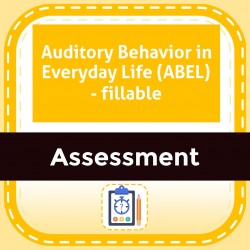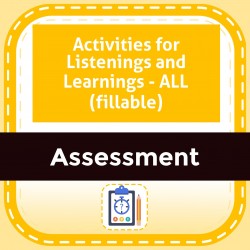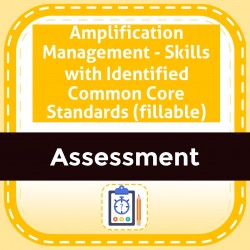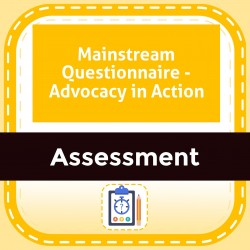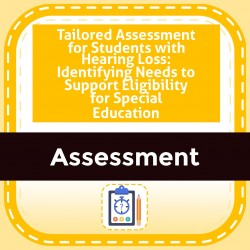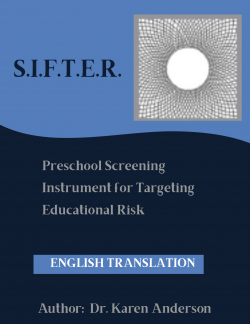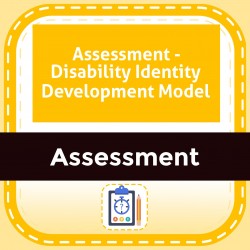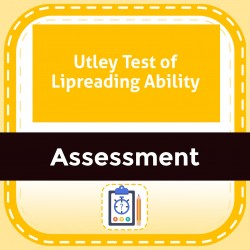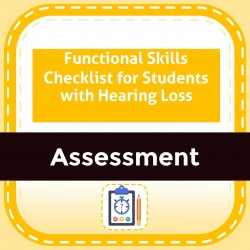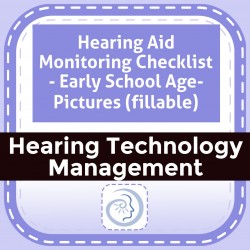Ability Levels
Categories
Resource Types
Age/Grade Range
CCSS
Anchor Standard
Speaking & Listening
Language
Reading
Auditory Behavior in Everyday Life (ABEL) - fillable
$ 195
Auditory
Behavior in Everyday Life (ABEL) is a quick questionnaire
to be completed by parents or others who know the
student very well. 7-choice response format with question categories:
...
auditory-oral, auditory awareness, and conversational/social skills. A
typically developing child who learns primarily through listening can be
expected to evidence all skills by age 6. Fillable.
Activities for Listenings and Learning - ALL (fillable)
$ 295
ALL - Performance Checklist for Development of Complex Listening Skills. Provides a list of Listening, Communication, and Learning Skills with spaces to complete progress. Areas: auditory association,
...
discrimination, memory, closure, humor, etc.
Amplification Management - Skills with Identified Common Core Standards (fillable)
$ 395
Progress monitoring sheet specifying student skill areas for amplification management and monitoring with the specific common core standard identified for each skill area. Fillable.
Mainstream Questionnaire - Advocacy in Action
$ 1
This is a brief functional checklist for classroom teachers comprising o 6 questions that are rated never-sometimes-always. Questions relate to the student's positioning within the classroom, use of r
...
epetition, alerting teacher to noise and need for speechreading, and use of FM/DM equipment, etc. Fillable.
Tailored Assessment for Students with Hearing Loss: Identifying Needs to Support Eligibility for Special Education
$ 0
Informational article describing the legal foundation supporting tailored assessment for students with hearing loss and need for effective performance review. Refers to Resources for Identifying DHH S
...
tudent Needs which is available from Teacher Tools Takeout.
Preschool S.I.F.T.E.R. - Screening Instrument For Targeting Educational Risk
$ 0
The Preschool Screening Instrument For Targeting Educational Risk (SIFTER) was created as a tool to screen the functional performance of students with hearing loss in preschool through kindergarten (a
...
ges 3-6). It includes a scoring grid to identify areas of concern. User's manual is at S0XASM1285.
Assessment - Disability Identity Development Model
$ 295
Gibson's Identity Model is explained in three stages. Students are asked to rate each of the statements about their hearing loss, feelings about fitting in, and how they self-identify. Fillable form.
Utley Test of Lipreading Ability
$ 0
The Utley is a simple test of speECH-reading ability. Provides mean results for children with hearing loss. NOTE: this test is from the 1950s when auditory access was minimal and early identification
...
of hearing loss was nonexistent.
Functional Skills Checklist for Students with Hearing Loss
$ 150
The fillable Functional Skills Checklist for Students with Hearing Loss identifies specific areas in which students with hearing loss are most vulnerable to communication access and interaction perfor
...
ormance issues. Simply state the test used and the form will allow you to code it as Green – Yellow – Red, to highlight how the student compares with expectations for typical development. This helps to identify if an academic performance gap is present, or if it is widening as time goes on. Without the same performance or access as class peers, typical student progress is jeopardized. Appropriate planning will address how full access to education will be assured to prevent a widening gap in academic achievement.
Hearing Aid Monitoring Checklist - Early School Age- Pictures (fillable)
$ 425
Fillable checklist for student to complete daily. Uses pictures along with written questions. 1 page per week.
 Your browser is out of date. For best experience switch to latest updated Browser.
Your browser is out of date. For best experience switch to latest updated Browser.
 Get Chrome
Get Chrome Get Edge
Get Edge Get Firefox
Get Firefox